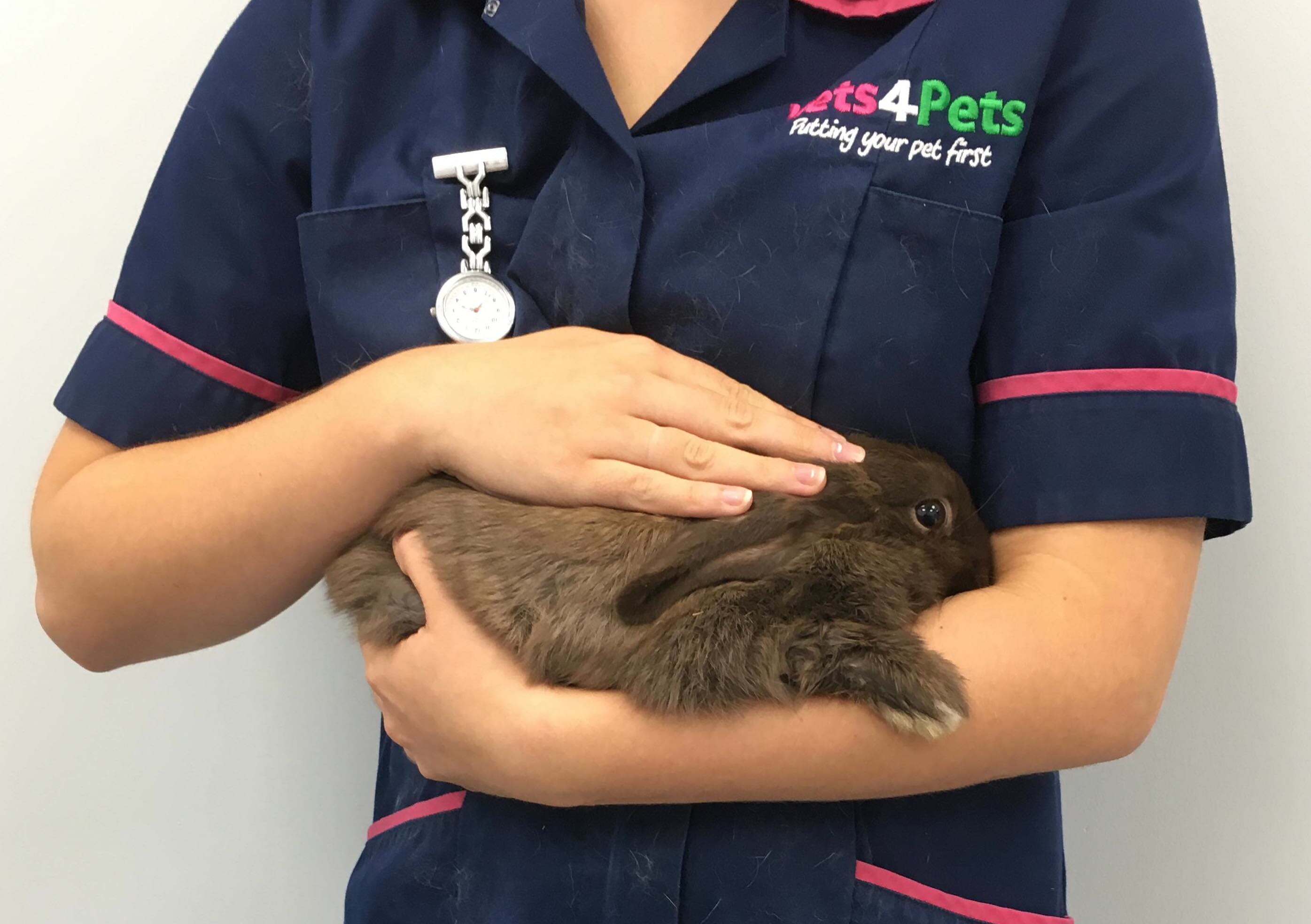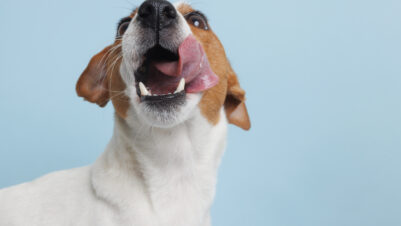Rabbits are becoming one of the more common animals seen in practice, and with this comes a rising expectation from owners about the level of care available. Our understanding of the diseases they suffer from is also developing and we have a greater range of differentials than ever before. No longer is it just “snuffles” and “stasis”, but more an investigation into these as signs of another problem.
As a result, rabbits are visiting vets more frequently; they are spending longer in veterinary hospitals and undergoing more complex procedures. This can be stressful for a prey species and can worsen an individual’s condition. There are, however, ways to reduce stress during examination and hospitalisation of the pet rabbit.
Recognising signs of stress
Rabbits are a prey species, so, by nature, they hide signs of disease well. However, they do show behavioural and physiological traits that allow us to determine their state of mind, with stress and fear manifesting in similar ways.
Behaviour
Stressed rabbits will tend to hide in the back corners of boxes or under things. In some instances, this can turn into aggression with the animals rushing at and biting anyone trying to open the cage or pet them. Often these rabbits will also thump loudly to warn other rabbits and try to dissuade the “predator” from coming at them.
Appearance
The stressed or frightened rabbit will often try to make itself as small as possible, either by “hunching” up or lying flat to the ground, in a non-relaxed posture. The eyes are often wide with lids retracted and pupils dilated. Breathing rate will be elevated, often with short, sharp breaths, and abdominal and leg muscles will be taut.
Improving transport
When preparing rabbits for transport there are several things that can be done to allow acclimatisation and reduce stress. A rabbit can be trained to be less fearful of the carrier by leaving it with them in their enclosure. Putting treats and food inside can encourage them to enter and explore, and they will often start to see it as a “safe shelter”.
When the rabbit is inside and ready for transport, a towel can be draped over the carrier to make them feel more secure. However, ventilation must be provided, and weather conditions taken into account so the rabbit does not overheat.
Pet Remedy sprayed onto the towel may help to calm the rabbit during transport and other calming agents such as nutraceuticals, eg Nutracalm, can be given to the rabbit in food in the days leading up to the transport event.
Desensitisation might also be possible through making short “dummy runs” in the car, so that the rabbit is not just put in the box to be transported to a practice. Rewards and treats can be used after such events to help with training.
Reducing stress during examination
Providing rabbit-only clinics or having a quiet seating area in the waiting room away from prospective predators would be considered gold standard. Even if this area is just away from dogs, that is a good start – especially if there is a visual barrier. Rabbit-only clinics can be run in a similar way to those for cats, with set times of the day for rabbit consultations. Providing towels to cover carriers in the waiting area can help make rabbits feel more secure.
In the consultation room, try to keep the environment as calm and quiet as possible. Dimmer lights may help; rabbits see better in light levels equivalent to dawn and dusk, so bright lights can be startling to them.
Tips for handling the rabbit
When handling the rabbit out of the carrier, try to provide support for all sides of the rabbit, as well as from beneath. This may mean having an arm down either side of the rabbit with your hands cupping the hind legs, and the front legs sitting on or near the curve of your elbow.
Carriers that can be opened from above are the most suitable; with these carriers, the rabbit should not feel as though a predator is approaching it through a small entrance and “dragging” it out.






When picking a rabbit up from above, it is again best to approach gently and let the animal know you are there. Then scoop and cup the rabbit to you with your arm on the outside and your body on the other (Figure 1). Having the rabbit with its head pointing inwards towards your elbow is usually more reassuring for them, though some individuals do like to look out at where they are going.
The key is gentle, but confident, restraint and working slowly and quietly around the animal. Palpation is best done with the rabbit in a normal sitting position, with its rear end again in towards one of your elbows. The same hand then cups and restrains the rabbit at its front, often by gently holding at the front legs and under the chin/neck. The opposite free hand can then be brought under the rabbit to palpate the abdomen. This can be made easier by slightly raising the cranial end of the rabbit with the restraining hand (Figure 2).
When examining the head, approach gently from the side, letting the rabbit know you are there. Never come straight towards the mouth and nose – they will react and flinch because they have a blind spot at this location. Also try to avoid stimulating the whiskers; these are very sensitive and touching them can startle the rabbit if this happens via their blind spot.
You may have seen reports in recent literature about scruffing or turning rabbits upside down for examinations. Never scruff to pick up a rabbit. This method is stressful and can result in serious injuries if the rabbit decides to kick and protest.
Secondly, try not to turn a rabbit upside down for examinations if possible; this will induce a significant stress response. It should only be used if no other option is available and if it is in the interests of the rabbit to do so (ie the potentially induced stress is outweighed by the procedure being undertaken, or if by doing it without turning the rabbit, the stress is actually greater than if the rabbit is restrained upside down).
If a patient is particularly difficult to handle, consider other methods of restraint, such as creating a “bunny burrito” using a towel (Figure 3). If a rabbit is restrained upside down, try to keep this for as short a period as possible and if needed, give breaks in between any procedures.
Hospitalisation and procedures
As with the consultation room, forethought is necessary to reduce stressful stimuli as much as possible. Ideally, rabbits should be kept in their own ward away from the sights and sounds of predators such as ferrets, dogs, cats and large birds of prey.
The kennels should be equipped to provide a secure and familiar environment, including a suitable drinking receptacle, normal diet and a hiding area, which can be ascertained during admission questioning.
Using a Pet Remedy plug-in diffuser, or other similar calming aids, may help in the wards. Allowing bonded pairs to come in together will certainly provide reassurance and reduce stress. Colleagues should be made aware of any special needs or personality traits the rabbits may have, so these can be considered. Restraint and handling for procedures should follow a pattern similar to that in the consultation room, ideally at a time when predator species are not out in the same area.








